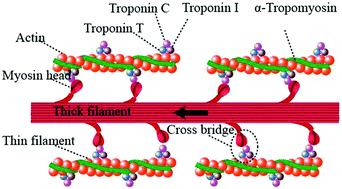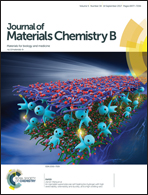An injectable supramolecular self-healing bio-hydrogel with high stretchability, extensibility and ductility, and a high swelling ratio†
Abstract
Reversible networks are a key factor for designing self-healing hydrogels with high stretching properties. To achieve that, it is often necessary to modify or graft functional groups to the main chains for inducing the formation of reversible covalent-bond-based chemical cross-linking or hydrogen-bond-based physical cross-linking, thus leading to a complicated chemical process and high cost. Here, we proposed a dynamic sliding physical crosslinking mechanism of chains to design and synthesize hydrogels with both good self-healing ability and extensibility by introducing interstitial phases of small organic molecules into the hydrogel networks to enhance hydrogen bonds, which has been proved to be a quite facile and practical approach to achieve stretchable and self-healing properties. Our work might greatly promote our ability to understand the role of hydrogen bonds that are often overlooked in the design of materials. The as-synthesized hydrogels displayed extraordinary swelling properties with a swelling ratio of 2750% in PBS and of nearly 10 000% in stilled water, respectively, and they also showed excellent performance after many stress cycles under 95% compressive deformation. The use of 10% diethylene glycol could allow the elongation to be increased from 238% to 2705%. Our cell and animal experimental studies indicated that the as-synthesized supramolecular hydrogels have good biocompatibility and bioactivity and show potential for clinical application.



 Please wait while we load your content...
Please wait while we load your content...